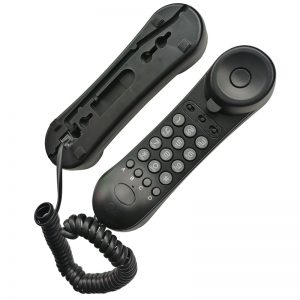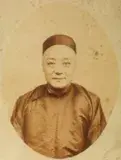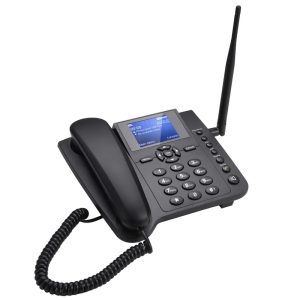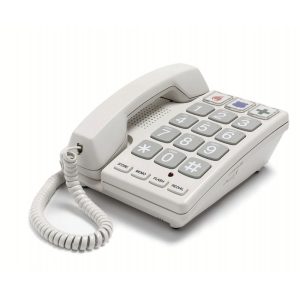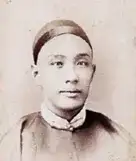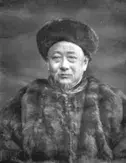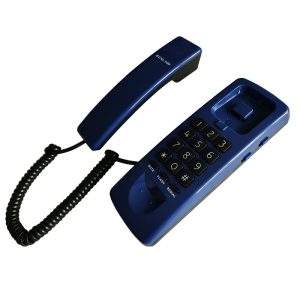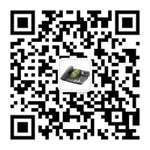4G Bandas de frequência
LTE has been developed to operate on paired spectrum for Frequency Division Duplex (FDD), and unpaired spectrum for Time Division Duplex (TDD).
For an LTE radio system to facilitate bidirectional communication, it is necessary to implement a duplex scheme so that a device may transmit and receive without collision. In order to achieve high data rates, LTE operates full duplex whereby both downlink (DL) and uplink (UL) communication takes place simultaneously by separating DL and UL traffic either by frequency (i.e., FDD), or time periods (i.e., TDD).
While less efficient and more electrically complex to deploy, FDD tends to be more commonly deployed by operators due to refarming of existing 3G spectrum arrangements. By comparison, deploying TDD requires less spectrum as well as eliminating then need for guard bands permitting a more efficient stacking of spectrum. UL/DL capacity can also be dynamically adjusted to match demand simply by devoting more airtime to one over the other. No entanto, transmission timing must be synchronised between base stations, introducing complexity, along with guard periods being required between DL and UL subframes, which reduces capacity.
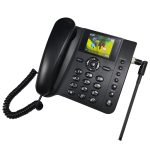
As the professional 4G landline phone manufacturer, Shenzhen East Line Communication Tech Co., Ltd. can supply and customize different kinds of 4G fixed wireless phones, 4G IP phones, 4G outdoor campus telephones etc. Para maiores informações, please visit our website:
https://www.oemtelephone.com/product-category/fixed-wireless-phone/4g-fixed-phone/
FDD LTE Frequency Bands
The continuing evolution of carrier aggregation has resulted in several new bands added, including B29, B32, B67, and B69 used for downlink-only carrier aggregation, termed Supplemental DL bands[5]. Supplemental DL bands 252 e 255 have been included as part of the LTE-U expansion into unlicensed 5 GHz bands U-NII-1 and U-NII-3, respectively.
Release 16.0 in April 2019 saw the introduction of European 450 MHz LTE bands for the purposes of emergency services use during disaster relief.
The below table lists the 39 Frequency Division Duplex and Supplemental Downlink LTE bands, compiled from 3GPP 36.101 (Rel. 17.1) [June 2023]

| E-UTRA Band | Identifier | Uplink (MHz) | Downlink (MHz) | UL EARFCN | DL EARFCN | Channel Bandwidths (MHz) |
|---|---|---|---|---|---|---|
| B1 (2100 MHz) | IMT Core Band | 1920 – 1980 | 2110 – 2170 | 18000 – 18599 | 0 – 599 | 0.2, 5, 10, 15, 20 |
| B2 (1900 MHz) | PCS 1900 | 1850 – 1910 | 1930 – 1990 | 18600 – 19199 | 600 – 1199 | 0.2, 1.4, 3, 5, 10, 15, 20 |
| B3 (1800 MHz) | 1800 | 1710 – 1785 | 1805 – 1880 | 19200 – 19949 | 1200 – 1949 | 0.2, 1.4, 3, 5, 10, 15, 20 |
| B4 (1700 MHz) | AWS 1700 | 1710 – 1755 | 2110 – 2155 | 19950 – 20399 | 1950 – 2399 | 0.2, 1.4, 3, 5, 10, 15, 20 |
| B5 (850 MHz) | 850 | 824 – 849 | 869 – 894 | 20400 – 20649 | 2400 – 2649 | 0.2, 1.4, 3, 5, 10 |
| B7 (2600 MHz) | IMT Extension | 2500 – 2570 | 2620 – 2690 | 20750 – 21449 | 2750 – 3449 | 0.2, 5, 10, 15, 20 |
| B8 (900 MHz) | 900 | 880 – 915 | 925 – 960 | 21450 – 21799 | 3450 – 3799 | 0.2, 1.4, 3, 5, 10 |
| B9 (1800 MHz) | 1700 (Japan #2) | 1749.9 – 1784.9 | 1844.9 – 1879.9 | 21800 – 22149 | 3800 – 4149 | 5, 10, 15, 20 |
| B10 (1700 MHz) | 3G Americas Extended AWS blocks A-I | 1710 – 1770 | 2110 – 2170 | 22150 – 22749 | 4150 – 4749 | 5, 10, 15, 20 |
| B11 (1500 MHz) | 1500 (Japan #3) | 1427.9 – 1452.9 | 1475.9 – 1500.9 | 22750 – 22949 | 4750 – 4949 | 5, 10 |
| B12 (700 MHz) | US 700 Lower A, B, C | 698 – 716 | 728 – 746 | 23010 – 23179 | 5010 – 5179 | 0.2, 1.4, 3, 5 |
| B13 (700 MHz) | US 700 Upper C | 777 – 787 | 746 – 756 | 23180 – 23279 | 5180 – 5279 | 0.2, 5, 10 |
| B14 (700 MHz) | US 700 Upper D | 788 – 798 | 758 – 768 | 23280 – 23379 | 5280 – 5379 | 5, 10 |
| B17 (700 MHz) | US 700 Lower B, C | 704 – 716 | 734 – 746 | 23730 – 23849 | 5730 – 5849 | 5, 10 |
| B18 (850 MHz) | 850 (Japan #4) | 815 – 830 | 860 – 875 | 23850 – 23999 | 5850 – 5999 | 0.2, 5, 10, 15 |
| B19 (850 MHz) | 850 (Japan #5) | 830 – 845 | 875 – 890 | 24000 – 24149 | 6000 – 6149 | 0.2, 5, 10, 15 |
| B20 (800 MHz) | CEPT 800 | 832 – 862 | 791 – 821 | 24150 – 24449 | 6150 – 6449 | 0.2, 5, 10, 15, 20 |
| B21 (1500 MHz) | 1500 (Japan #6) | 1447.9 – 1462.9 | 1495.5 – 1510.9 | 24450 – 24599 | 6450 – 6599 | 0.2, 5, 10, 15 |
| B22 (3500 MHz) | FDD 3500 | 3410 – 3500 | 3510 – 3600 | 24600 – 25399 | 6600 – 7399 | 5, 10, 15, 20 |
| B24 (1600 MHz) | US L-Band | 1625.5 – 1660.5 | 1525 – 1559 | 25700 – 26039 | 7700 – 8039 | 5, 10 |
| B25 (1900 MHz) | PCS 1900 G | 1850 – 1915 | 1930 – 1995 | 26040 – 26689 | 8040 – 8689 | 0.2, 1.4, 3, 5, 10, 15, 20 |
| B26 (850 MHz) | E850 Upper | 814 – 849 | 859 – 894 | 26690 – 27039 | 8690 – 9039 | 0.2, 1.4, 3, 5, 10, 15 |
| B27 (850 MHz) | E850 Lower LTE | 807 – 824 | 852 – 869 | 27040 – 27209 | 9040 – 9209 | 1.4, 3, 5 |
| B28 (700 MHz) | APT 700 | 703 – 748 | 758 – 803 | 27210 – 27659 | 9210 – 9659 | 0.2, 1.4, 3, 5, 10, 15, 20 |
| B30 (2300 MHz) | LTE WCS | 2305 – 2315 | 2350 – 2360 | 27660 – 27710 | 9770 – 9869 | 5, 10 |
| B31 (450 MHz) | LTE 450 Brasil | 452.5 – 457.5 | 462.5 – 467.5 | 27760 – 27785 | 9870 – 9919 | 0.2, 1.4, 3, 5 |
| B65 (2100 MHz) | 2 GHz LTE | 1920 – 2010 | 2110 – 2200 | 131072 – 131971 | 65536 – 66435 | 1.4, 3, 5, 10, 15, 20 |
| B66 (1700 MHz) | AWS Extension | 1710 – 1780 | 2110 – 2200 | 131972 – 132671 | 66436 – 67335 | 1.4, 3, 5, 10, 15, 20 |
| B68 (700 MHz) | LTE 700 Arab Region | 698 – 728 | 753 – 783 | 132672 – 132971 | 67536 – 67835 | 5, 10, 15 |
| B70 (1700 MHz) | AWS-3/4 | 1695 – 1710 | 1995 – 2020 | 132972 – 133121 | 68336 – 68585 | 5, 10, 15, 20 |
| B71 (600 MHz) | US 600 | 663 – 698 | 617 – 652 | 133122 – 133471 | 68586 – 68935 | 0.2, 5, 10, 15, 20 |
| B72 (450 MHz) | 450 EU BB-PPDR | 451 – 456 | 461 – 466 | 133472 – 133521 | 68936 – 68985 | 0.2, 1.4, 3, 5 |
| B73 (450 MHz) | 450 LTE APAC | 450 – 455 | 460 – 465 | 133522 – 133571 | 68986 – 69035 | 0.2, 1.4, 3, 5 |
| B74 (1500 MHz) | FDD L-band | 1427 – 1470 | 1475 – 1518 | 133572 – 134001 | 69036 – 69465 | 0.2, 1.4, 3, 5, 10, 15, 20 |
| B85 (700 MHz) | 700 a+ | 698 – 716 | 728 – 746 | 134002 – 134181 | 70366 – 70545 | 5, 10 |
| B87 (450 MHz) | PPDR PMR/PMAR in EU | 410 – 415 | 420 – 425 | 134182 – 134231 | 70546 – 70595 | 0.2, 1.4, 3, 5 |
| B88 (450 MHz) | PPDR PMR/PMAR in EU | 412 – 417 | 422 – 427 | 134231 – 134280 | 70596 – 70645 | 0.2, 1.4, 3, 5 |
| B103 (700 MHz) | NB-IoT 700 | 787 – 788 | 757 – 758 | 134282 – 134291 | 70646 – 70655 | 0.2 |
| B106 (900 MHz) | 900 FDD | 896 – 901 | 935 – 940 | 134292 – 134341 | 70656 – 70705 | 1.4, 3 |
TDD LTE Frequency Bands
The increasing asymmetric demand for downlink data has also resulted in the introduction of Band 46, a downlink-only Supplemental DL band operating in the 5 GHz U-NII frequency range.
Banda 47 has been introduced for applications such as Vehicle to Everything (V2X) communications, which is positioned in the U-NII-3 5 GHz unlicensed band. Cellular V2X (C-V2X) may require the use of unlicensed bands to solve regulatory issues related to LTE-Direct, where devices broadcast directly to nearby devices[6]. Like all unlicensed band LTE technologies, V2X operates Band 47 only in carrier aggregation with the operator’s licensed band.
The below table lists the 20 Time Division Duplex and Supplemental Downlink LTE bands, compiled from 3GPP 36.101 (Rel. 17.1) [June 2023]
| E-UTRA Band | Identifier | Freqüência (MHz) | EARFCN | Channel Bandwidths (MHz) |
|---|---|---|---|---|
| B33 (2100 MHz) | TDD 2000 Lower | 1900 – 1920 | 36000 – 36199 | 5, 10, 15, 20 |
| B34 (2100 MHz) | TDD 2000 Upper | 2010 – 2025 | 36200 – 36349 | 5, 10, 15 |
| B35 (1900 MHz) | 1900 | 1850 – 1910 | 36350 – 36949 | 0.2, 1.4, 3, 5, 10, 15, 20 |
| B36 (1900 MHz) | TDD 1900 | 1930 – 1990 | 36950 – 37549 | 0.2, 1.4, 3, 5, 10, 15, 20 |
| B37 (1900 MHz) | PCS Center Gap | 1910 – 1930 | 37550 – 37749 | 5, 10, 15, 20 |
| B38 (2600 MHz) | IMT Extension Gap | 2570 – 2620 | 37750 – 38249 | 5, 10, 15, 20 |
| B39 (1900 MHz) | China TDD 1900 | 1880 – 1920 | 38250 – 38649 | 5, 10, 15, 20 |
| B40 (2300 MHz) | TDD 2300 | 2300 – 2400 | 38650 – 39649 | 5, 10, 15, 20 |
| B41 (2500 MHz) | TDD 2500 | 2496 – 2690 | 39650 – 41589 | 5, 10, 15, 20 |
| B42 (3500 MHz) | TDD 3500 | 3400 – 3600 | 41590 – 43589 | 5, 10, 15, 20 |
| B43 (3700 MHz) | TDD 3700 | 3600 – 3800 | 43590 – 45589 | 5, 10, 15, 20 |
| B44 (700 MHz) | APT 700 TDD | 703 – 803 | 45590 – 46589 | 3, 5, 10, 15, 20 |
| B45 (1500 MHz) | China TDD 1400 | 1447 – 1467 | 46590 – 46789 | 5, 10, 15, 20 |
| B46 (5200 MHz) | LAA 5200 | 5150 – 5925 | 46790 – 54539 | 10, 20 |
| B47 (5800 MHz) | V2X 5800 | 5855 – 5925 | 54540 – 55239 | 10, 20 |
| B48 (3600 MHz) | US CBRS 3500 | 3550 – 3700 | 55240 – 56739 | 5, 10, 15, 20 |
| B50 (1500 MHz) | TD 1500+ | 1432 – 1517 | 58240 – 59089 | 3, 5, 10, 15, 20 |
| B51 (1500 MHz) | TD 1500- | 1427 – 1432 | 59090 – 59139 | 5 |
| B53 (2400 MHz) | TDD LTE over WiFi | 2483.5 – 2495 | 60140 – 60254 | 1.4, 3, 5, 10 |
| B54 (1600 MHz) | TD 1700 | 1670 – 1675 | 60255 – 60304 | 5 |
Shenzhen East Line Communication Tech Co., Ltd.
The professional fixed landline telephones manufacturer


